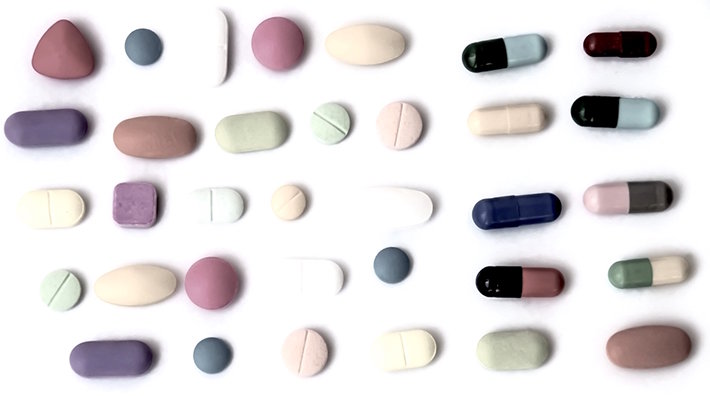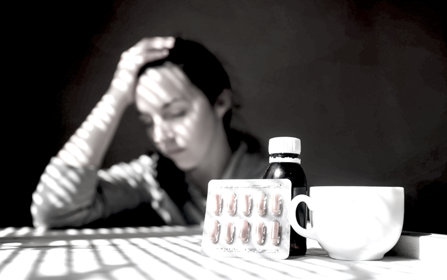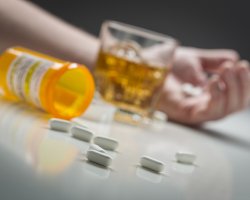The Most Dangerous Pharmaceuticals to Take

For the last twenty-plus years, the United States has been on the receiving end of what might be the worst drug addiction epidemic that this country has ever seen. Everywhere we turn, there is an addiction. Every year that passes, the problem gets worse. But unlike previous addiction difficulties that our country has faced, the backbone of the 21st-century addiction crisis has not been illegal hard drugs. This time, it’s been legal pharmaceuticals.
Who would have thought that our country would fall prey to addiction habits with legal drugs? This is not something that any of us could have seen coming, a perfect storm that crept upon us, like a thief of our lives and of our lifestyles. When America was reaching for solutions to pain problems and mental strife, we didn’t get solutions. We got bigger problems, problems in the form of highly addictive and potentially dangerous pharmaceutical drugs.
Pills to Watch Out For
We live in a society now where we cannot even trust our own medicines.OxyContin, Hydrocodone, Percocet, Opana, Dilaudid, Fentanyl, Demerol, Valium, Nembutal, Xanax, Adderall, Ativan, Lexapro, Ritalin, Prozac, Librium, Ambien, Halcion, Seconal… the list goes on and on. Those are all pharmaceutical drugs that pose a risk for addiction in the patient, and that list only just scratches the surface of all of the addictive medicines that are on the market today.
A more extensive list of dozens of pharmaceutical drugs, (including the above), that present real risk for causing addiction would be drugs like:
- Actiq
- Adderall
- Ambien
- Amytal
- Ativan
- Biphetamine
- Codeine
- Concerta
- Darvocet
- Demerol
- Dexedrine
- Dolophine
- Duragesic
- Duramorph
- Empirin
- Fiorinal
- Halcion
- Klonopin
- Librium
- Lunesta
- Methadone
- Nembutal
- OxyContin
- Percocet
- Percodan
- Phenobarbital
- Ritalin
- Roxanol
- Seconal
- Sonata
- Sublimaze
- Suboxone
- Tylox
- Valium
- Vicodin
- Xanax

This is probably still not a complete list of all of the addictive pharmaceutical drugs on the market today, but the above list at least shows the most commonly used ones. The sad truth is that millions of Americans are taking the above drugs, and they are probably taking them with absolutely no clue as to the risks and dangers for addiction and the other adverse side effects that come with those substances.
Each patient should take the time to talk to their doctors', pharmacists' and eve research the drug itself on the internet when researching on the web, beware of who is hosting the site you are referencing and what their vested interests might be. With our access to the information highway, we must all be responsible for our health and safety and be able to make informed decisions about our health care and not just leave it up to the “experts.” You can be your best EXPERT.
The Condition of Addiction Today, Thanks to Prescription Drugs
Clearly, the most addictive prescription drugs that have caused the lion’s share of problems are opioid pain reliever drugs and psychotropic medications. Our nation is facing a lot of problems now, thanks to the overuse of painkillers and mind-altering psychiatric medications. To put the problem into context, we’ve included a few citations below from key, authority organizations on the drug and alcohol crisis.
The National Institute on Drug Abuse touched on how heavily exposed our young adult generation is to pharmaceutical drugs, and how harmful this is for them. They cited research indicating that young adults ages eighteen to twenty-five are the top abuser of prescription opioids, ADHD drugs, and anti-anxieties. NIDA also talked about how about two-thousand teens die every year from overdoses on such pills.
The Substance Abuse and Mental Health Services wrote about some of the key statistics on prescription drug abuse, also citing information from the National Survey on Drug Use and Health. According to their researchers, “Prescription drug misuse and abuse is the intentional or unintentional use of medication without a prescription, in a way other than prescribed, or for the experience or feeling it causes.” The SAMHSA article indicated further that about fifteen million people misuse prescription drugs on a regular basis. Furthermore, this trend only seemed to begin when pharmaceutical manufacturers increased the production of such pills by over three-hundred percent in the late-1990s and early-2000s.
The American Society of Addiction Medicine also penned a research paper on the risks that we face with certain prescription drugs. Their researchers said that “Drug overdose is the leading cause of accidental death in the U.S., with 52,404 lethal drug overdoses in 2015. Opioid addiction is driving this epidemic, with 20,101 overdose deaths related to prescription pain relievers in 2015.”
ASAM went on to discuss the ongoing dangers and risks connected to opioid prescription painkillers, pointing out some of the key math that shows the increase in prescription drug use and misuse:
“From 1999 to 2008, overdose death rates, sales and substance use disorder treatment admissions related to prescription pain relievers increased in parallel…”
“From 1999 to 2008, overdose death rates, sales and substance use disorder treatment admissions related to prescription pain relievers increased in parallel. The overdose death rate in 2008 was nearly four times the 1999 rate; sales of prescription pain relievers in 2010 were four times those in 1999, and the substance use disorder treatment admission rate in 2009 was six times the 1999 rate.”
If there was any doubt before that we have a serious drug problem that’s been added to significantly thanks to prescription drugs, the above research data should act as evidence beyond any shadow of a doubt that yes, a drug problem is here and yes, it has been sorely exacerbated by pharmaceutical drugs.

How can We Free America from the Trap of Legal Addiction?
As one can probably imagine by now, a society that’s biggest addiction problem comes from legal drugs is a society that has a very complex problem on their hands. This is not a black and white problem. However, there are strategies for reducing the problem effectively.
First of all, we need to reduce our reliance on pharmaceuticals. The simple logic is that we were getting along okay before we started using them, and we can likely get on okay without them once again.

But to ensure that patients have an alternative, we should also explore holistic and alternative methods of pain relief. We need to explore alternatives for soothing mental and spiritual strife too. The rampant, across-the-board use of pharmaceutical opioids and psychiatric medications is just not working for us anymore.
As a united American people, we need to not only demand better care and more variety of care, but we also need to work on this problem amongst ourselves. We shouldn’t just leave it up to Big Pharma and the medical industry to solve our problems for us. That didn’t work out so well for us last time. Instead, we should each, individually be doing our own research and our own data-gathering in an effort to find safe and effective solutions to our physical pain and mental strife.
We are a consumer-driven economy and we need to become informed consumers and not give in to the advertisements to the “quick fix” and demand that our doctors treat our ills without the use of potentially more dangerous pharmaceuticals. Often physical or occupational therapies, nutritional adjustments, change of environment or even a quiet night at home with a loved one can be more therapeutic and less dangerous than the doctor's prescription. GET INFORMED and retake control of your care.
Sources:
- https://www.samhsa.gov/topics/prescription-drug-misuse-abuse


 ®
®